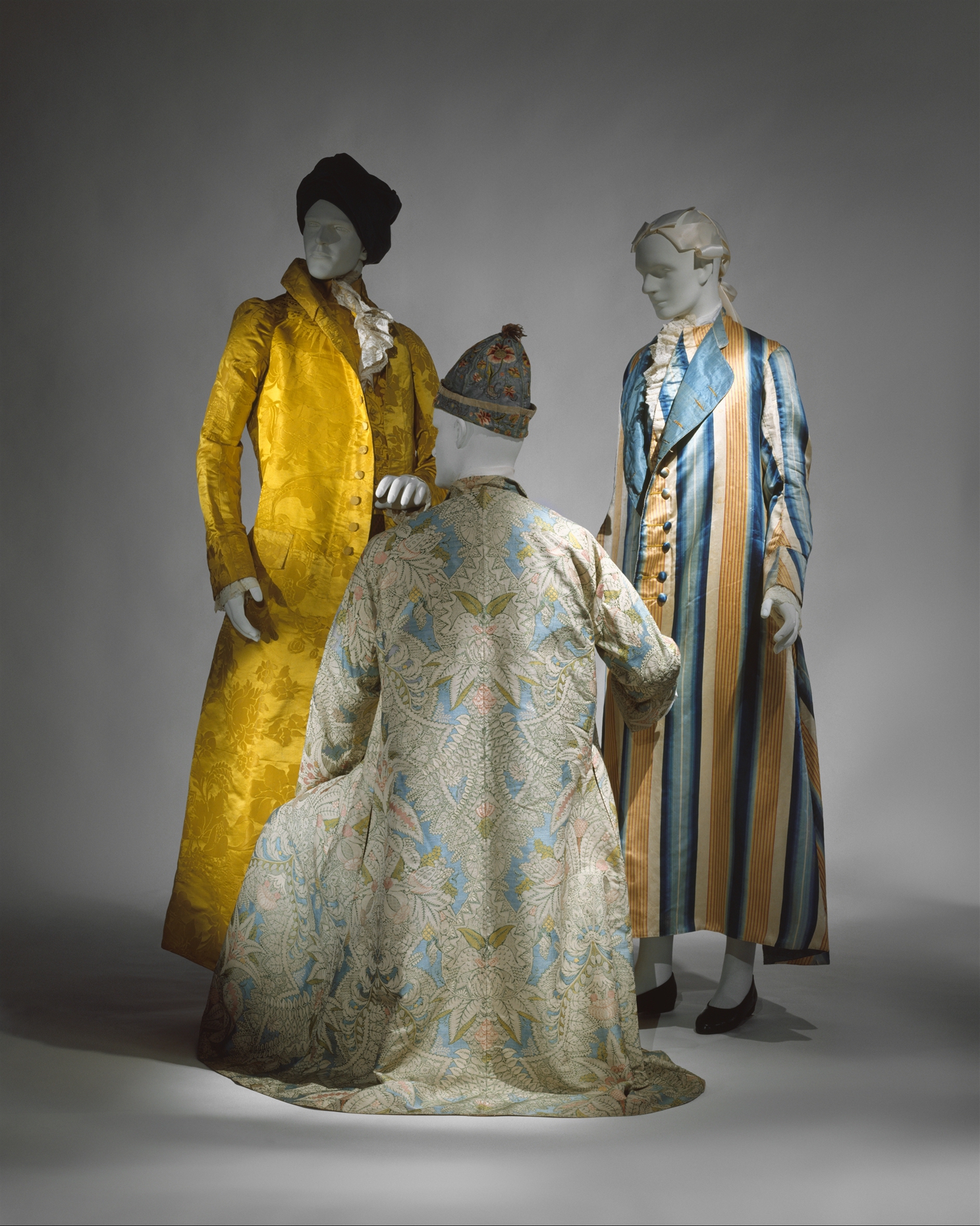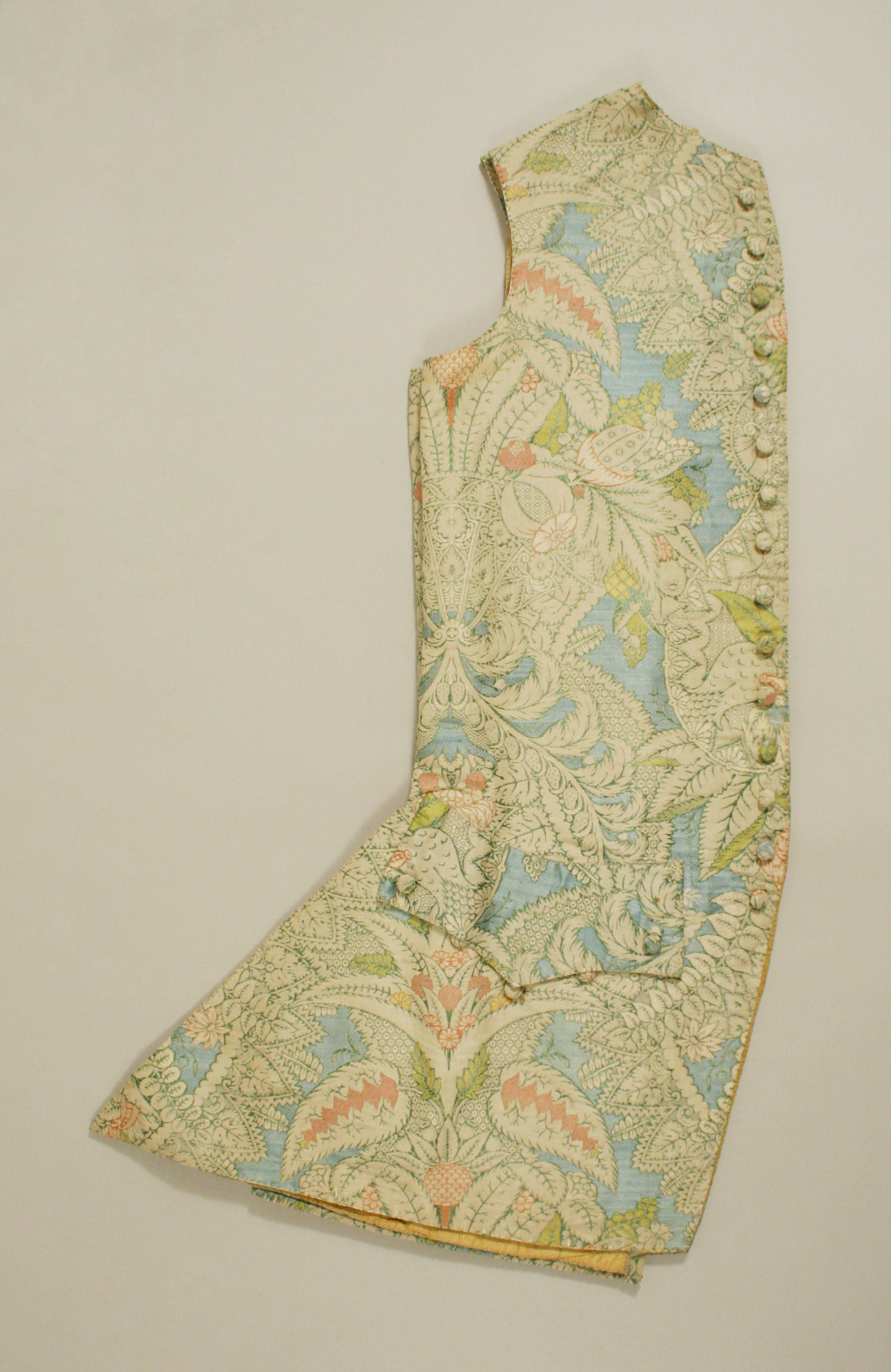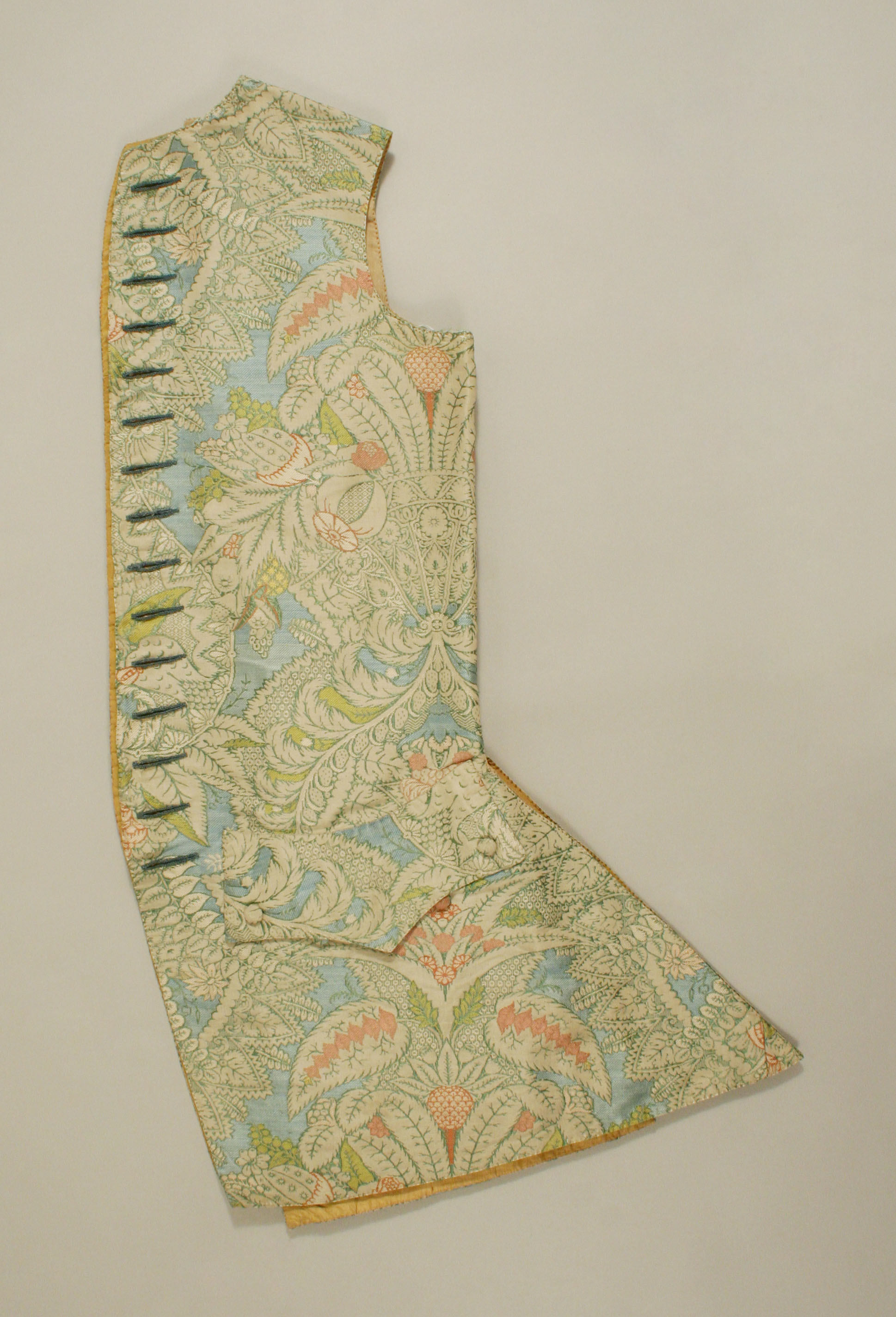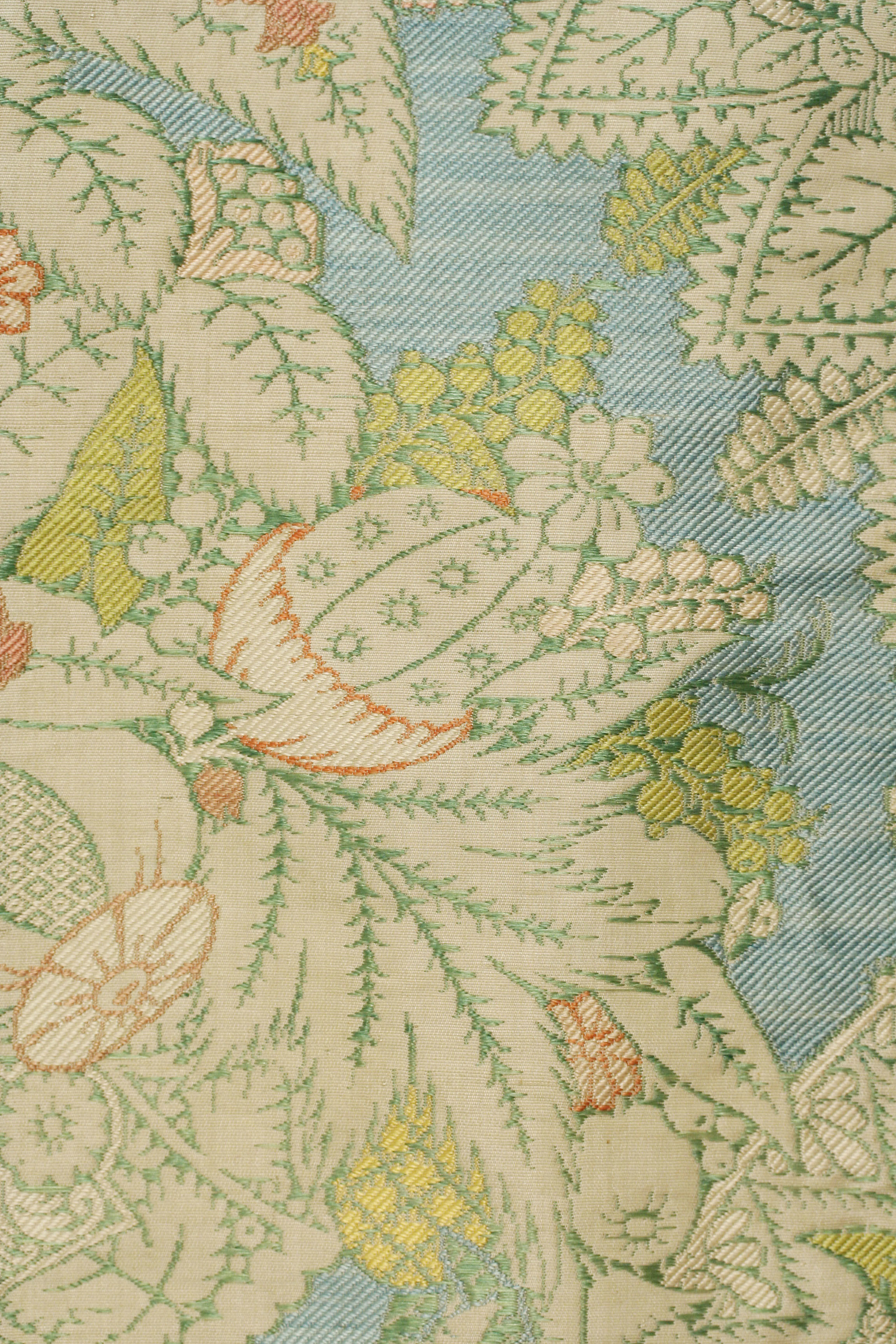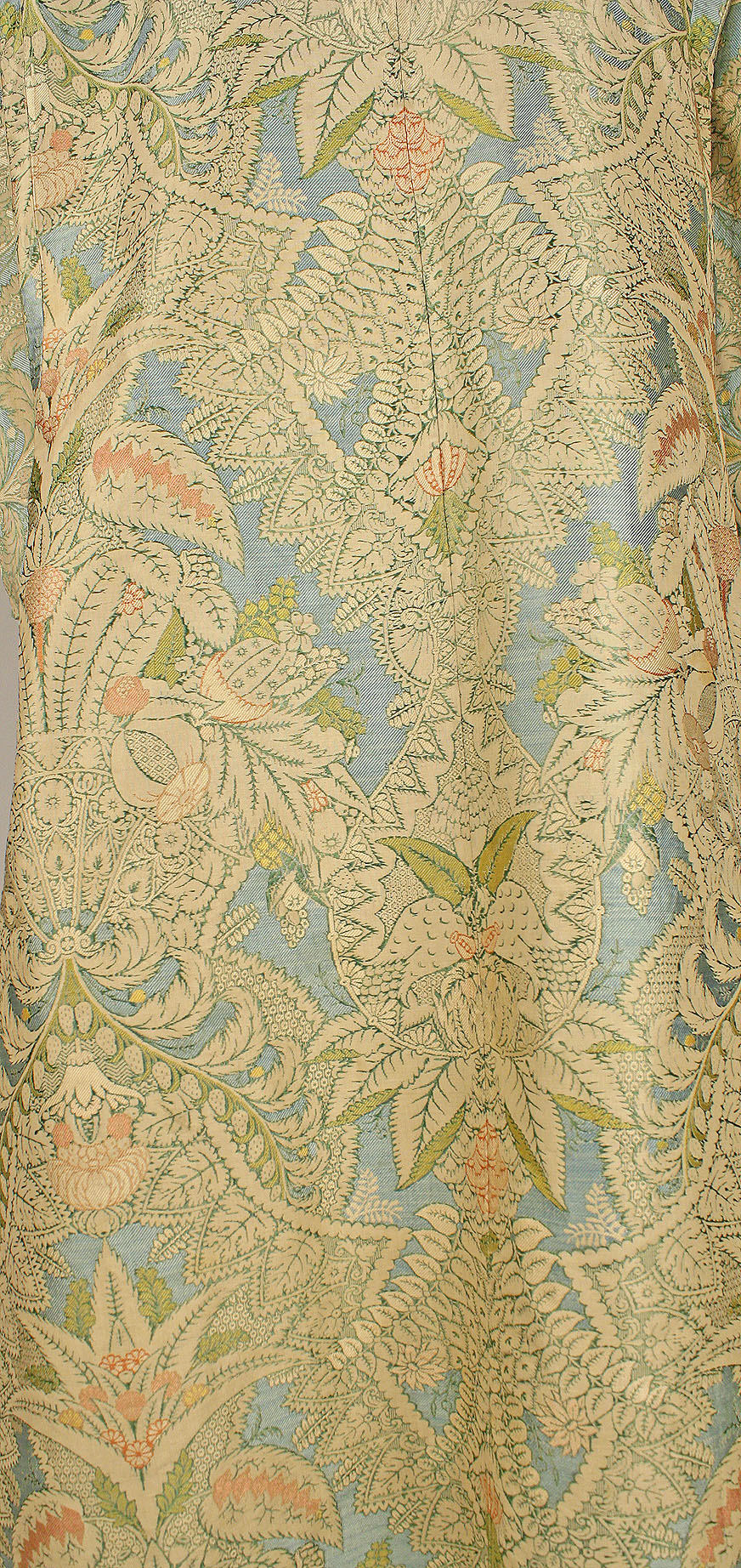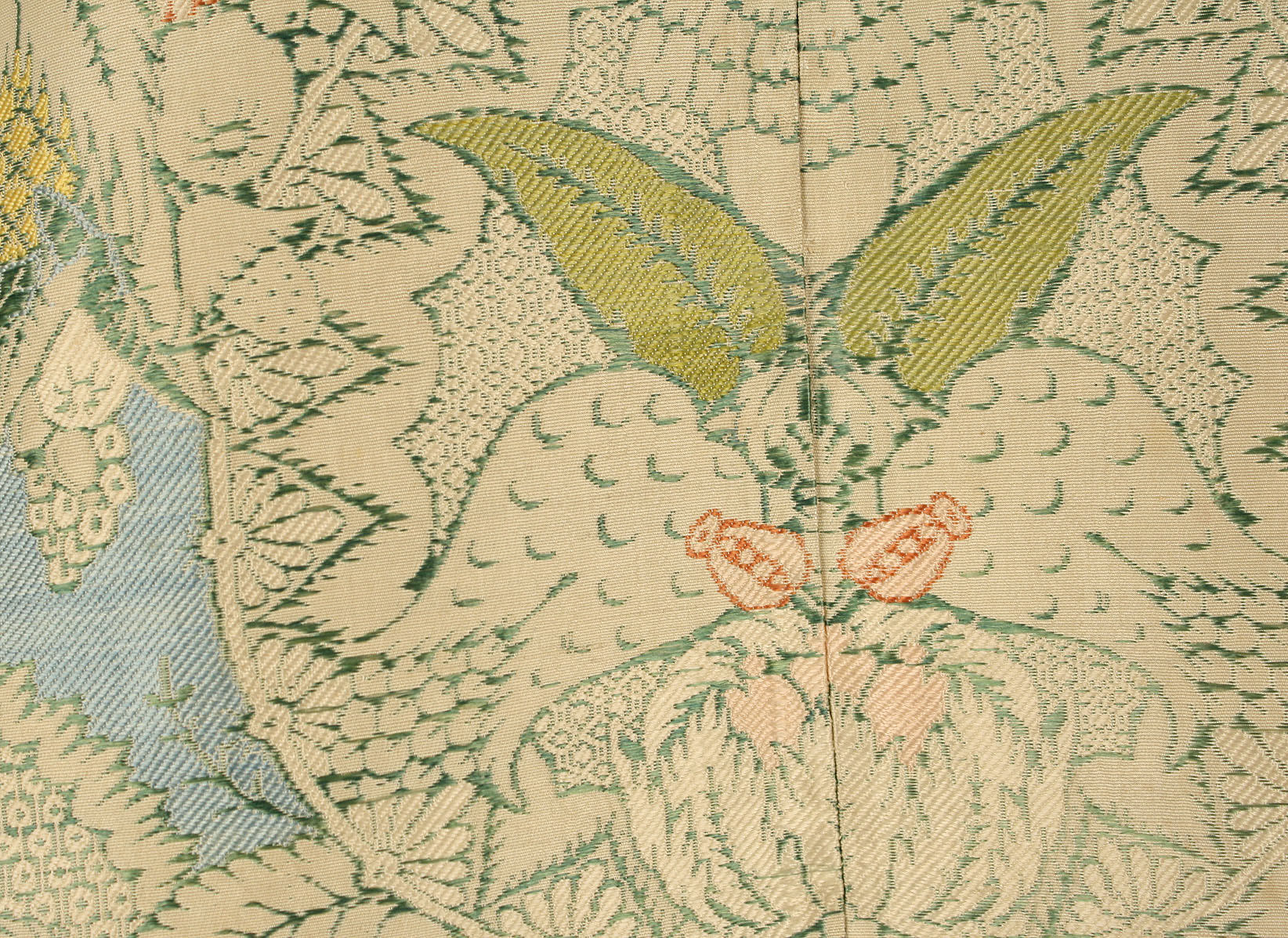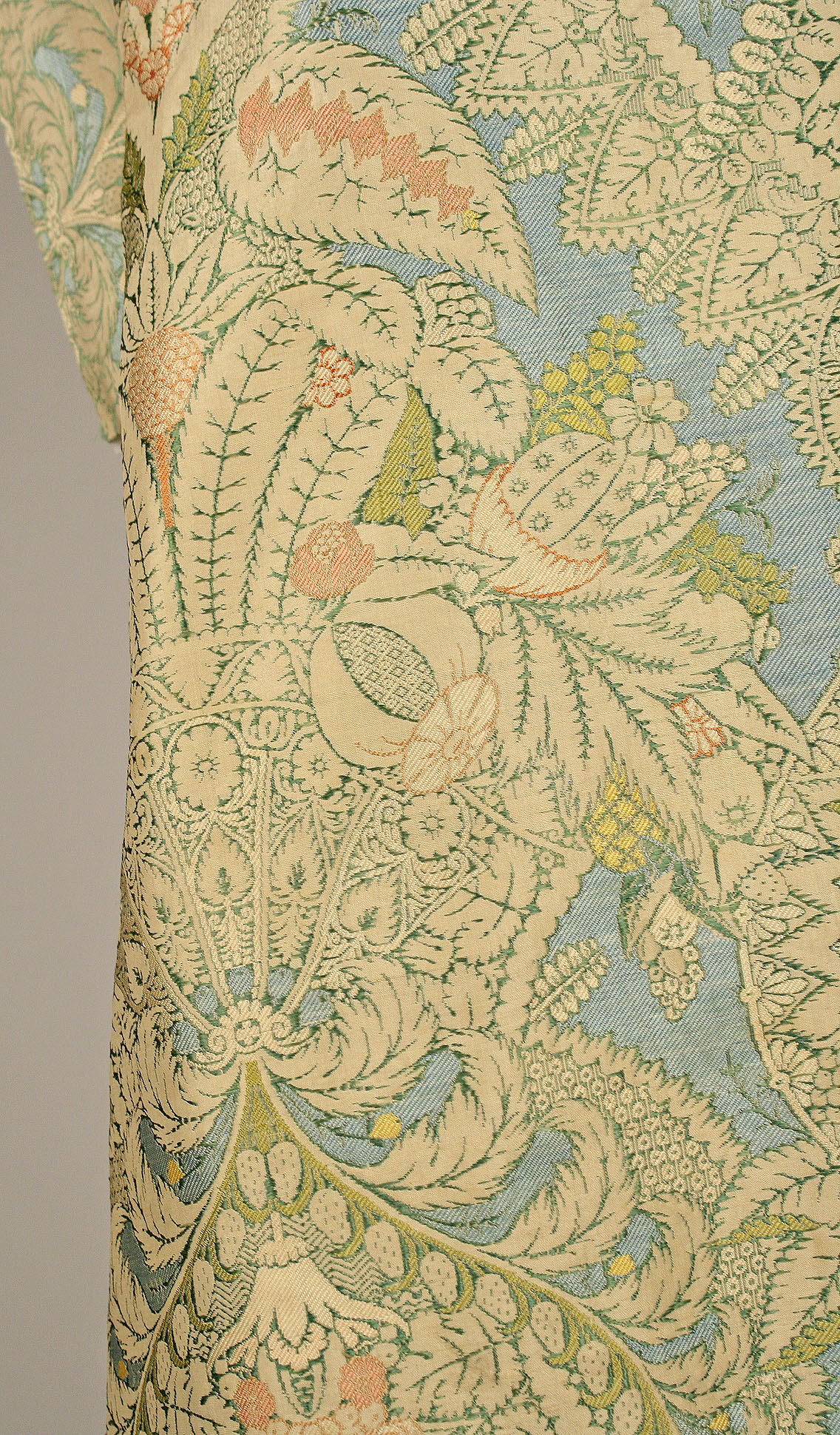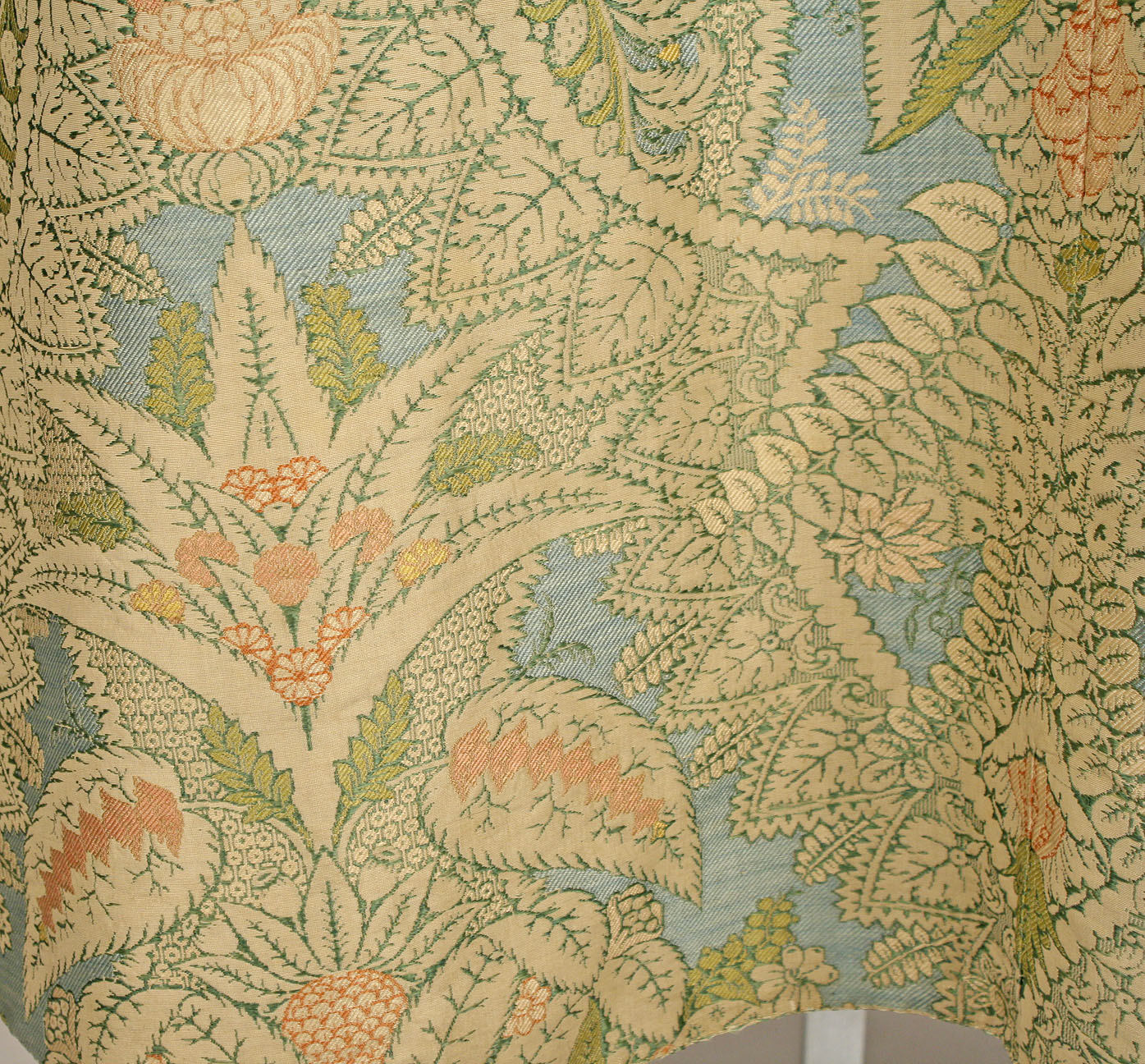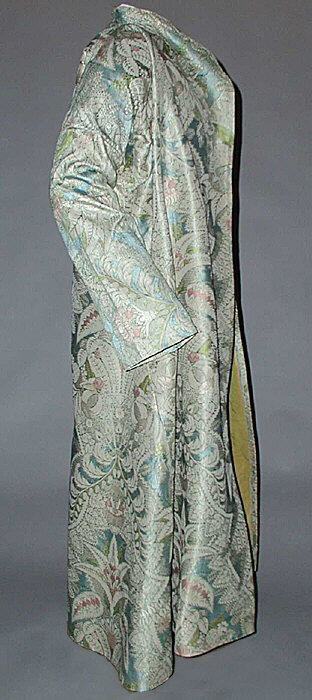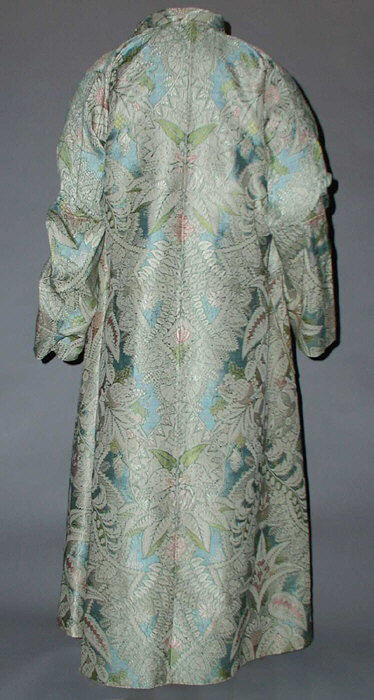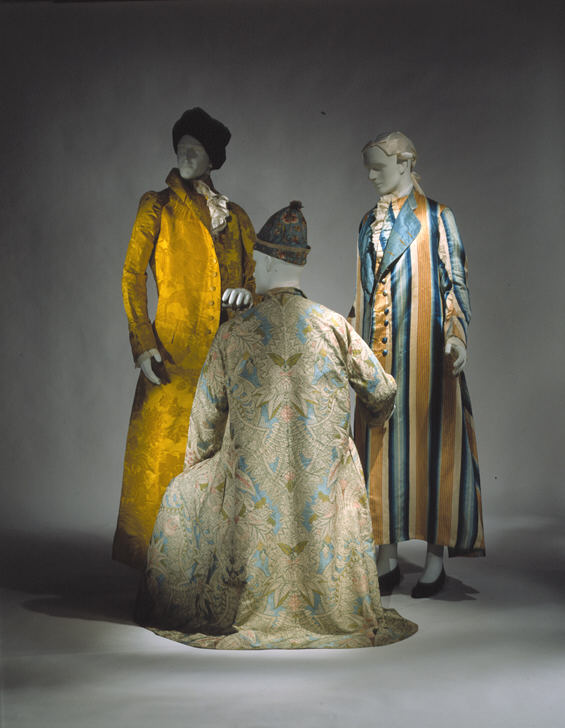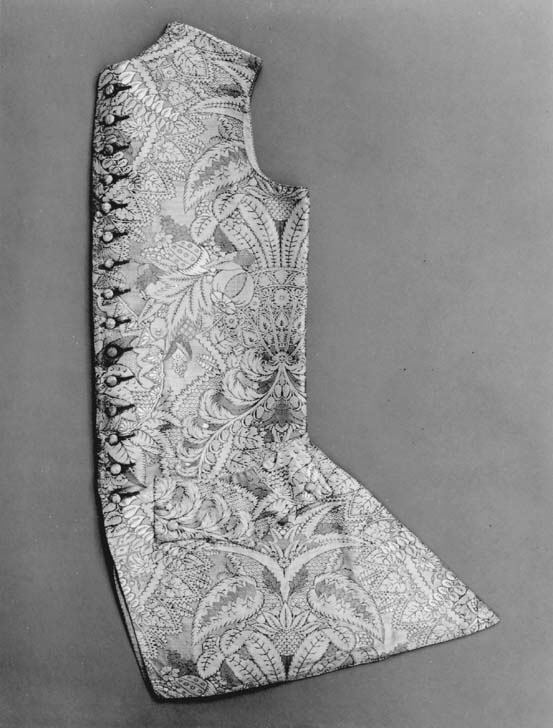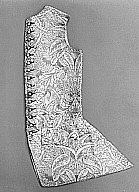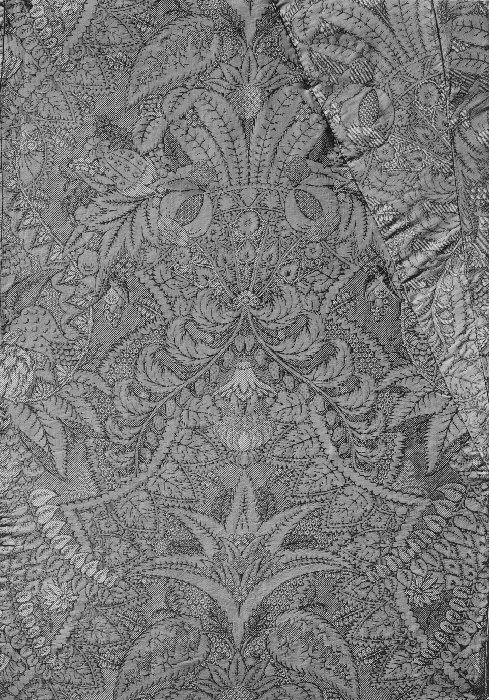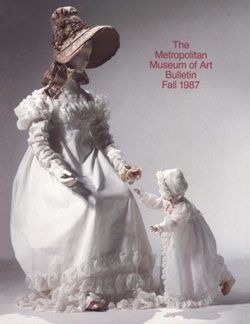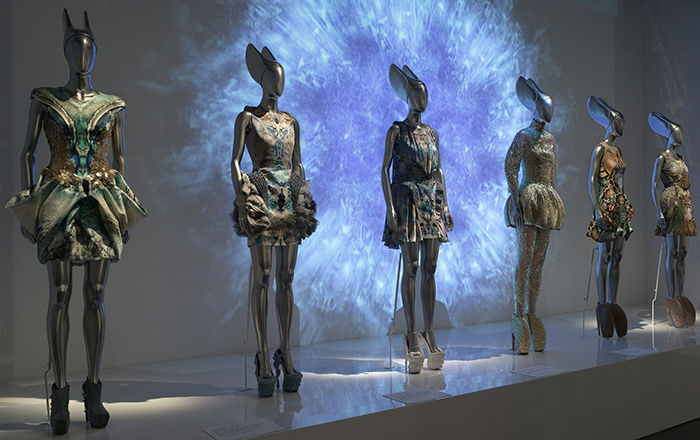Banyan and waistcoat
Not on view
This eighteenth-century French banyan—a T-shaped garment named for merchants from Gujarat, India—testifies to the early exchange of clothing styles between East and West. The garment’s non-Western influences range from kimonos to Indiennes (men’s dressing gowns of Indian chintz) and Turkish robes. The banyan was popular with European intellectuals who wore it as a symbol of a freethinking, worldly attitude. Because of its ease of cut, it was worn as a dressing gown over a shirt and breeches after informal meals. Although worn only at home, many banyans were nevertheless made from luxurious patterned silks. An early hybrid of Eastern modes of dress transformed by global trade at a time when Japan was largely isolated from the West, the banyan foreshadowed the kimono’s influence in Europe and America over the next two centuries.
On view from October 22, 2022–February 20, 2023
This image cannot be enlarged, viewed at full screen, or downloaded.
This artwork is meant to be viewed from right to left. Scroll left to view more.


